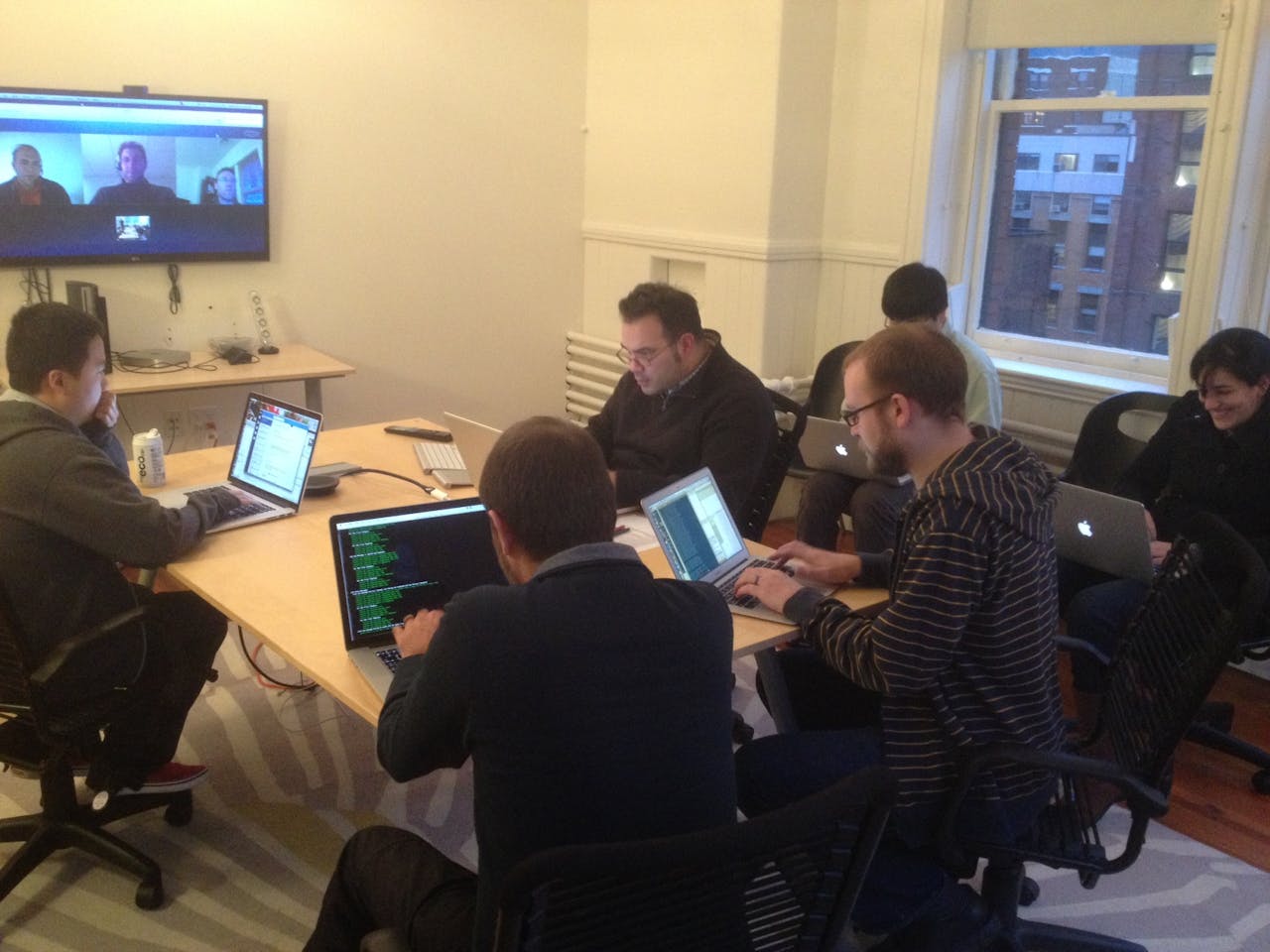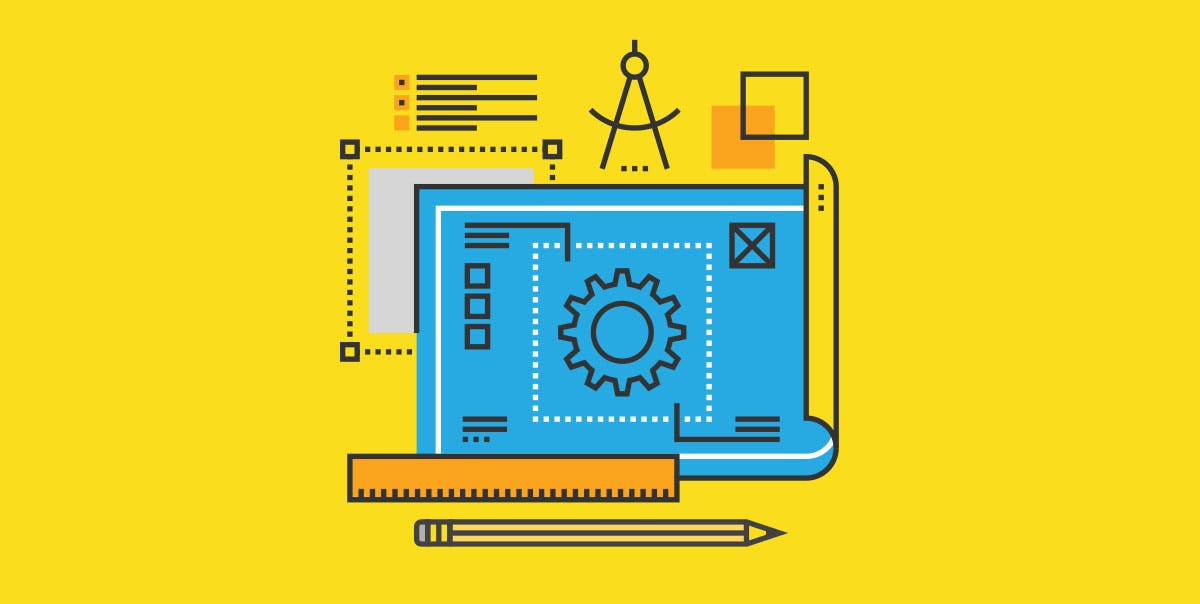Building the Future: Three Kinds of Product Development
Romy Ribitzky

This is what Foundation building looks like.
By Matthew Bellows, CEO at Yesware
Is it just me, or does it seem like one kind of product development has all the fun? The other two types are boring, but more important. Here’s a quick post about all three. It’s my way of introducing some boring but very important changes at Yesware.
Everyone knows about the exciting kind of product development. The epiphany. The diagram scrawled on the bar napkin. The brilliant insight from the engineer who never says anything. People make movies about the ideas that get built into products that attract users, attention and lots of money.
Pioneering Time
At Yesware, we call time to pursue those kinds of ideas Pioneering time. Pioneering is product development time when we branch out from our base product. We build new features and try big improvements. It’s like hiking or skiing off trail – you’ve got a map, but there’s no trail to get where you want to go.
Our CRM Services infrastructure came out of that time (more on that later). In the early days, after the initial templates feature was live, we pulled key folks off everything else to build email tracking in Pioneering Time. It’s awesome when it works, and even when it doesn’t, it’s exciting.
Farming and Foundation
The other two kinds of product development, Farming and Foundation, are not really awesome, but arguably more important. The Farming kind of product development is going back through features that we’ve already built and improving them. We’ve tilled the soil of the initial user experience at least a dozen times in the last 18 months. We need to do it again soon. But it’s fertile land for improvement, so we keep coming back, and it keeps paying dividends for our business.
Both Pioneering and Farming are user-facing, so you can see the results of your efforts in user experience, user joy and user retention. The third kind of product development, Foundation, isn’t even that exciting. These are the projects we undertake to build our business. Foundational projects have included all our Admin reports, our billing integration, our build process, all the ongoing Heroku wrangling. Everything that keeps our service up, scaling and generating dollars is Foundation for us.
If you’ve requested an awesome feature and we say we want to do it, but we haven’t yet, it’s because we’ve been Farming and building Foundation instead.
The challenge for any startup is to know how to divide precious development time between the three types of product work. At one point we tried identifying sprints by name and theme. That didn’t really work. I wish I had a blanket answer here. The only reliable thing I can say is “Don’t try to guess what you’ll be doing in four months.”
Three New Service Tiers
This brings me to our announcement: we’ve been doing a lot of Foundation building in the last month. Today, we’re rolling out three new service tiers of Yesware. We started with Free in September 2011. We added Plus in February 2012. Today we’re adding Team, Enterprise and Custom.
Most Yesware users won’t be affected by these changes. We will be ending the open beta period for several features, including Contact Insights (now available only to Plus subscribers and above) and Salesforce integration (now available only to Team subscribers and above). Team template sharing, and report details for teams of more than 10 people will be made available only to Team, Enterprise, and Custom accounts.
If you are a Free user, you will still have 100 free tracking events every month, and the ability to invite colleagues to earn more. All your templates, tracking, goals, prospects, BCC to CRM, and other features not noted above, will remain unchanged.
If you are a Plus user, your current price will not change, and all features not noted above will remain intact. If you add new Plus users under your existing account, you’ll receive the exact same pricing and discounts that you receive today. New Plus accounts will cost $5 per user per month.
You can see the details of each product tier here.
I hope these changes aren’t a surprise for anyone. Over the last three months, we’ve sent out emails, had phone calls, and participated in screen shares, videoconferences and in-person meetings with literally tens of thousands of customers. If we’ve missed you, we deeply apologize for our oversight.
In the end, this isn’t sexy stuff. It’s Foundational. We need to bundle features into separate tiers so we can build a business.
Looking Forward
It has been gratifying to hear customers say things like “I knew this was coming, and I completely understand” and “You guys should have raised prices on us a long time ago.”
At one point a Yesware user literally stopped me on the street and said “You need to triple or quadruple your prices!” Those anecdotes, and the kind of support we’ve received from amazing companies signing big long-term deals for 2013, make me believe we’re on the right track with these changes.
But time, and your feedback, will tell. Please let me know what you think about these changes in the comments below or by email (matthew@yesware.com).
And now that we’ve gotten this Foundational work done, let’s do some Pioneering!
Get sales tips and strategies delivered straight to your inbox.
Yesware will help you generate more sales right from your inbox. Try our Outlook add-on or Gmail Chrome extension for free, forever!
Related Articles
Bernie Reeder
Matthew Bellows
Bernie Reeder
Sales, deal management, and communication tips for your inbox

